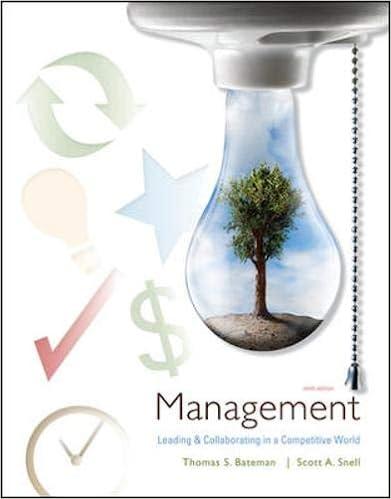Rocky Gagnon is a 50-year-old journeyman carpenter, laborer, and craftsman. Over the past 30 years, he has
Question:
Rocky Gagnon is a 50-year-old journeyman carpenter, laborer, and craftsman. Over the past 30 years, he has worked in almost every job and phase of the house building process. Gagnon is getting older and his back is getting sore. He loves the construction business and feels that now is the time for him to start working more with his mind than his back. Gagnon wants to become a general contractor. Some general contractors have their own facilities, equipment, and employees. Others simply work out of their homes and subcontract all of the work required to complete a particular project. Gagnon has an idea and a vision for something a little different. He wants to put together a team of tradespeople who will agree to work together toward the successful completion of about 8 to 15 homes per year. At the same time, each individual will be able to continue to operate as an independent contractor during off hours. One of the results of working for 30 years in the local building trades is a large and varied network of friends and acquaintances. Gagnon has enjoyed many a drink with the local plumbing and heating contractors, roofers, insulation people, land surveyors, and others. He wants to take advantage of those relationships. The general profile of local contractors, according to Gagnon, is that of a highly skilled, very independent group of people with poor communication skills. The workmanship is generally very good—when it finally gets done. Many jobs and phases of the house-building process take place in a logical sequence. For example, insulation people cannot do their work until the “rough” electrical, plumbing, and heating work is completed. If any of those contractors falls behind schedule or does not complete his or her task, the process is disrupted. Outside factors such as weather, availability of materials, and overlapping schedules and deadlines with other jobs further complicates the challenge of meeting deadlines. Gagnon wants to coordinate all of this and make house building more efficient. The spirit of cooperation is also severely lacking, according to Gagnon. It seems that many contractors could not care less about the crew that will follow them in the building process. For example, a framing crew should know about the exact plans for the fireplace, hearth, and chimney on each job and should leave the site properly set up for that contractor. According to Gagnon, the all-too-typical response of the framer (as well as others) is, “That’s not my job, so don’t tell me about it.” Independent contractors are also notorious for leaving their messes behind for someone else to clean up, such as the general contractor or next crew. Gagnon wants to change all of this by bringing together a group of tradespeople who will agree to work together as a team for the common good. If done right, Gagnon sees this as a win-win situation for all parties. Rocky Gagnon knows that the opportunity for success clearly exists. New home construction is very strong in his area and is expected to stay that way for a long time. He also knows that the key to his success will be the presence of strong organizational and communication skills. Gagnon feels that all of the pieces of the puzzle are there for the taking, and that all he needs is some help in setting up the right team and an organizational structure and work process that will achieve the desired results. During the past few months, Gagnon put together a list and has met separately with the individuals he considers to be the best craftsmen in the area and, most important, who he knows have the potential and willingness to form the team and working relationship that he envisions. The first of several meetings has been set up for the entire group to meet and work through the particulars. Gagnon has hired a well-known and respected business professor from the local community to serve as an adviser and mediator for the group.
QUESTIONS
1. What type of team would work best in this situation? Support your answer with concepts from the text that apply to this proposed venture.
2. What kinds of problems would you expect this group to encounter? What is the best way to work through those?
3. What are the likely keys to success in motivating these individuals to cooperate and communicate as a team?
Step by Step Answer:

Management Leading And Collaborating In The Competitive World
ISBN: 9780078137242
9th Edition
Authors: Thomas Bateman, Scott Snell





